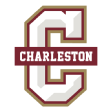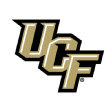Welcome to the first installment of Giant Killers for 2017-18. This hardy ESPN perennial alerts you to teams that, come March, are purpose-built to upset a "Giant" that is seeded at least five lines higher than the "Killer."
Bear in mind that some of the greatest Giant Killers of recent years have in fact been major-conference teams. (No. 10 seed Syracuse in the 2016 tournament certainly comes to mind.) However, I want to take a first cut at spotlighting the serious GK potential that, as always, lurks just outside the six major conferences.
Let me state at the top that if Wichita State is again seeded low enough to qualify as a Giant Killer, the men's basketball committee will (again) have some serious and possibly even extinction-level-event explaining to do. That being said, these are your preseason non-major Giant Killers for 2017-18.
Earl Grant saw one-time Cougars player Canyon Barry transfer to Florida before last season, but the head coach has since managed to hold on to the rest of his talented roster. As a result, all five starters return from a team that went 14-4 in the Colonial Athletic Association last season and won a one-point game on the home floor of eventual CAA champion UNC Wilmington. Joe Chealey brings opposing defenses to their knees by drawing six fouls per 40 minutes and shooting 83 percent at the line. Grant Riller is coming off a highly promising freshman campaign. Jarrell Brantley is a workhorse on the defensive glass. And the Cougars, as a team, take outstanding care of the ball. Grant's men should see some regression toward normalcy, as conference opponents no longer shoot less than 32 percent on their (frequent) 3s. Still, all the returning experience spells trouble for the rest of the CAA and, quite possibly, for a Giant or two in the NCAA bracket come March.
Having taken the reins from Steve Fisher, first-year SDSU coach Brian Dutcher has three returning starters in Trey Kell, Jeremy Hemsley and Malik Pope. Additionally, even during a 9-9 conference season, the Aztecs played the brand of stingy defense that long defined the program under Fisher. Mountain West opponents converted just 42 percent of their 2s against this D, a number that likely will stay low with the addition of 7-foot graduate transfer Kameron Rooks from California. Meanwhile, the offense should get a jolt now that San Francisco transfer Devin Watson is eligible. The 6-foot-1 point guard averaged 20 points a game for the Dons as a sophomore in 2015-16. SDSU was awful from the perimeter last season, hitting less than 30 percent of its 3s in MWC play, but if Watson and/or his teammates can keep opposing defenses honest and stretched, Dutcher could make a splash in Year 1.
Mark Schmidt's team might not win the Atlantic 10 Conference; Rhode Island is going to be tough to beat. But I like the Bonnies' chances to make the field of 68 -- and be seeded low enough to qualify as a true Giant Killer. The defense is adept at forcing turnovers, and Schmidt's starting backcourt of Jaylen Adams and Matt Mobley holds the added distinction of doubling as the preseason All-Atlantic 10 first team's guard duo. If the Bonnies can simply get the ball in the basket (which, granted, was an occasional struggle last season), the low-turnover backcourt, offensive-rebounding frontcourt and all-around team defense are already in place at the Reilly Center.
You're thinking UCF is included here because Tacko Fall's presence means opponents have a terrible time making 2s against this defense. Well, you are, in large part, correct. The Knights were the tallest team in Division I last season, and having a 7-foot-6 center most certainly helps a rotation capture that distinction. Nor should we underestimate the impact on offense of a player such as Fall, who takes a small yet increasing number of shots and, oh, by the way, connects on 72 percent of them. UCF's fate likely will be determined simply by turnovers -- its own and those of its opponents. Last season, the Knights actually outscored the American Athletic Conference by a whopping 0.15 points on "effective" (turnover-less) possessions, but that margin was shaved all the way down to +0.04 in conference play overall. Taking better care of the ball and, who knows, recording a few takeaways could work wonders for a program that hasn't been to an NCAA tournament since the Knights represented the Atlantic Sun Conference in the 2005 bracket.
 Harvard Crimson, Yale Bulldogs or Princeton Tigers
Harvard Crimson, Yale Bulldogs or Princeton Tigers
Why the three-team straddle? The dream of a two-bid (or more!) Ivy will be realized someday, but it might not come to fruition in 2018. If not, only one team from the league will be in the tournament, quite possibly a member of this trio. And make no mistake, any of these teams would pose a serious threat to a Giant. Appropriately enough, the Crimson, the Bulldogs and the Tigers recorded a virtual photo finish for the honor of preseason Ivy favorite. The battle for supremacy in one of the most experienced conferences in D-I is going to be epic, and it's very likely to produce a bona fide Giant Killer.




